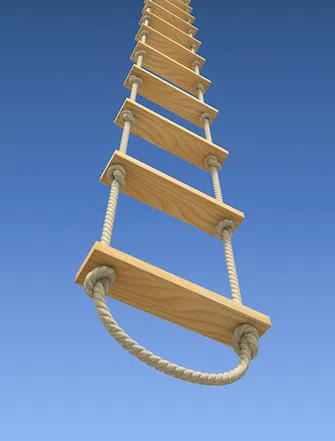Catching Mistakes before they reach customers can save money and ensure repeat business.
There is more money to be made in your hvacr business through the elimination of problems and mistakes than through anything else you will ever do. How do I know? For the past 20 years, my associates and I have measured the truecosts of mistakes and the costs to correct them. What we have found suggests that, on average, you can multiply the measured cost of the mistake by a factor of five in order to approximate the true cost of the mistake, the cost of correcting it, and the costs of lost opportunities caused by the mistake.So, since mistakes are so costly, doesn’t it make sense to focus on preventing them rather than correcting them? Quality guru Phil Crosby saysthat prevention versus detection is the foundation of any continuous improvement process. Beyond that, hehas identified the three basic elementsnecessary for establishing a preventionorientedculture in your company. Theseelements are training, empowerment,and support. Let’s take a closer look ateach of these important factors.
Training
Training is, without a doubt, the most critical element of the three. Without adequate skills training, you have no hope of creating a problem-prevention culture. However, there is much more involved than just having the required skills to perform a task. Co-workers also need to be trained to understand the part that they play in the overall customer-satisfaction process. They also need to understand what needs to be done before they add value via their skills. We call this “process training.” Here is an example to illustrate the power of process training to prevent problems: A dispatcher types “200 Segunda Lane” on a service ticket that is one of three given to a technician. At this company, technicians have a checklist that they must complete before leaving for appointments. One of the checklist items is to preprogram their routes into a GPS system. Upon doing this,the technician discovers that there is no such address. The location is actually “200 Segunda Way.” He notes the correct address and informs the dispatcher. Because the checklist provided a builtin check of the ticket addresses, the technician was on time and able to immediately focus upon greeting the customer. He wasn’t late because he had to find the correct address; he didn’t waste expensive fuel driving out of his way; and he was able to present a calm and confident persona to the customer. Most importantly, because he provided the correct information to the dispatcher, he prevented the mistake from happening again. Another example from the same company: Also on the technician checklist is making sure their trucks are completely stocked before leaving. If, upon stocking their trucks, they use one of the last three of a particular component on the warehouse shelf, they are to pick up a restocking request card next to the component bin and drop it in a box that the stockroom manager checks each day. In this way, the communication that more components are needed is made immediately, so no one can “forget” to inform the stoc kmanager of the pending stock-out or put a note on his desk that gets lost; and so no customer needs to be told: We’re out of that part, so we can’t fix your unit for two days. Teach your co-workers to think of an installation, service call, or any office procedure as a long assembly line process. If each person involved in a particular job knows what needs to happen before they can do their work correctly, this creates a built-in quality check system. If the employee sees that the process has not been done correctly when it reaches him, he can take steps to get the problem fixed before it reachesthe customer. That brings us to the empowerment phase.
Empowerment
Once people are trained both at the skills level and the process level, owners/managers need to empower them to make decisions based upon the best interest of the customer. When a team member sees that something was done incorrectly — or not done at all — before they perform their piece of the work, they have three possible responses: fix the flaw before it becomes a problem ;stop the process and have the people responsible for the flaw correct their mistake; or, ouch, they can ignore the flaw, do their piece, and send the job to the next person on the assembly line. Simply put, when people see a potential problem, they can either fix it ,send it back to be fixed, or ignore it and move on. You need to know that they will choose either the first or second options because the third surely will lead to problems down the road. A (hopefully uncommon) example of this is when an irate customer calls in to complain. The last thing this customer wants is to be transferred to someone else, and then someone else again, and then be told someone else will call them back. Empower employees to respond immediately to customer complaints. Certainly, there are times when a solution will require actions that can’t be done immediately, but often a customer’s complaint can be resolved quickly if an employee listens and responds rather than automatically sending the call elsewhere. Part of creating a problem-prevention culture is empowering your coworkers to become decision-makers. Then you must empower them to make the best use of that training by expecting them to make the right decisions.
Support
The final element that Crosby endorses is support. In this context, support means that owners/managers need to stand behind the decisions of their coworkers, even when they are wrong — so long as the wrong decision was made fo rthe right reason. Let me explain. If a team-member commits an error because he thought it was in the best interest of the customer, we should not chastise him for his mistake. Rather, we should thank him for his effort to do the right thing, and then train him on the right decision for that situation. If someone consistently makes the wrong decision, or no decision because they don’t care, then that person needs to be terminated before he infects the rest of the workforce. If you have been leading people for any length of time, you know exactly what, and probably whom, I’m talking about.
Absolutes of Quality
This article concludes my series on the Four Absolutes of Quality, so let’s recap what I have written about over the past few months. Think about these Absolutes as a sort of quality logicladder. On the top step, is the true definition of quality, which is “conformance to customerrequirements.” This should alway sbe the end-goal of your company. If we accomplish this goal, profits are bound to follow. (“5 Things That Customer’s Require,” July, 2009.)Supporting the top, the next stepdown contains your performance standards.These are the policies, procedures, systems, and processes that your company uses to reach the end-goal. They are the methods that you employ to ensure customer satisfaction. (“10 Steps Toward More Effective Performance Standards,”October, 2009.) Move down one more step, and you will find the cost of quality. This is the measurement step in the quality process. In real dollars you can calculate how well, or how poorly, your methods are working in attaining your goal. (“Calculatingthe True Cost of Bad Customer Service,”June, 2009.) Finally, the bottom, or foundation step, is the problem-prevention step that I have discussed in this issue. The establishment of a problem-prevention culture in your business creates the processes that are necessary to sustain continuous improvement in your business— not just now, but for all time.
Mike Callahan is President of Callahan/ Roach & Garofalo, Inc. The firm is anindustry leader in management andmarketing training, consulting, andbusiness sales, mergers and acquisitions.Mike served as President of The AirConditioning Contractors of America andis an internationally known speaker andwriter on business topics. Contact Mike atmcallahan@crginc.cc or call 800-462-8217



